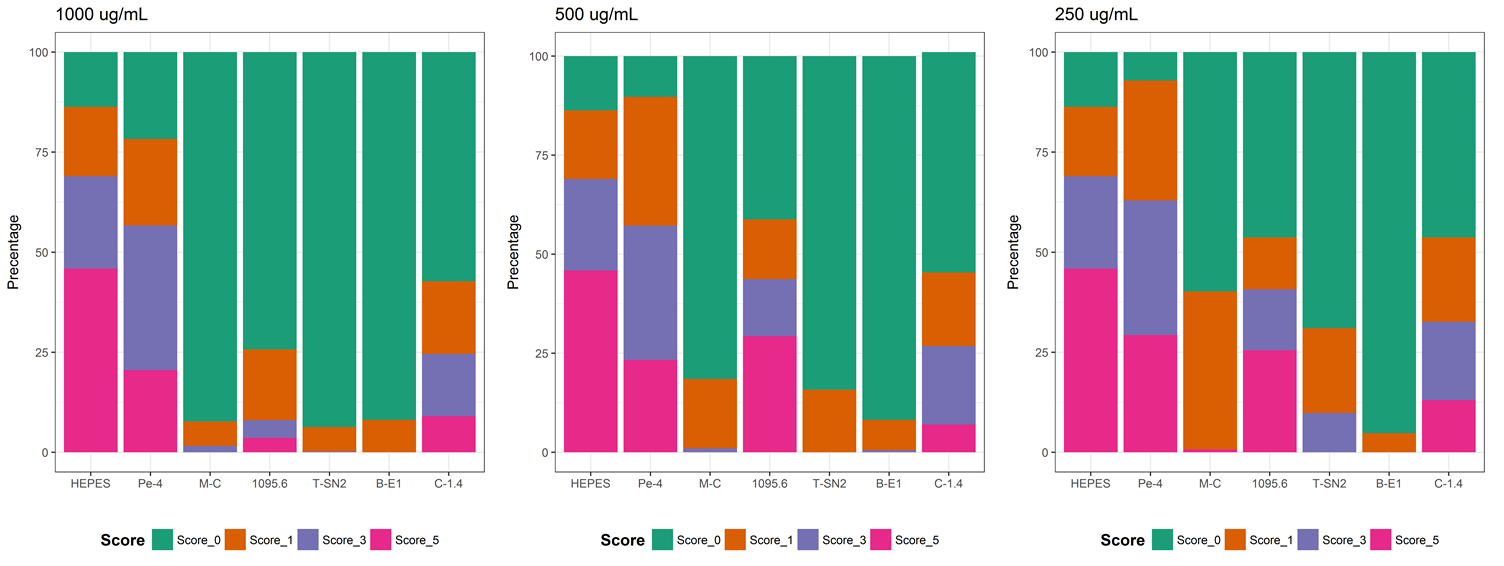Difference between revisions of "Part:BBa K2262017"
| Line 68: | Line 68: | ||
<h1>'''Reference'''</h1> | <h1>'''Reference'''</h1> | ||
| − | [1] Argiolas A; Pisano JJ. “Isolation and characterization of two new peptides, mastoparan C and crabrolin, from the venom of the European hornet, Vespa crabro.” J Biol Chem. 1984 Aug 25;259(16):10106-11. | + | [1] Argiolas A; Pisano JJ. “Isolation and characterization of two new peptides, mastoparan C and crabrolin, from the venom of the European hornet, Vespa crabro.” J Biol Chem. 1984 Aug 25;259(16):10106-11. |
<br> | <br> | ||
<br> | <br> | ||
Revision as of 15:27, 7 December 2017
T7 Promoter+RBS+M-C
Introduction
M-C is a mast cell degranulating peptide [1]. The score of SCM analysis shows its promising potential to be antifungal.
Scoring Card Predict
M-C got 387.08 from the Antifungal Scoring Card of Parabase System. The score is over 353, the threshold to divide whether a peptide has an antifungal function probability, that means M-C has a high probability to have an antifungal function.
Experiment
1. Inhibition Zone
The result shows that the place we put M-C does not have little different with negative control. We cannot definitely sure if M-C can inhibit the growth of mycelium.
2. Spore Germination
The result shows that the spore germination percentage of non-germinating spores adding M-C with a concentration of 1000 μg/mL was higher than adding the negative control, which means the spore germination is inhibited by peptides and proves the peptides are effective. We can get the same result from adding M-C with a concentration of 500 μg/mL and 250 μg/mL .
(3) Botany Experiment
In order to test our anti-fungal peptides, we put M-C and negative control, double-distilled water, on the flower. The negative control is on the left and M-C is on the right. Both sides are infected with Botrytis cinerea. We checked the flower 3 days later whether the flower was affected or not. The result shows that the right side, which was spread on M-C, is not infected. It means M-C has an anti-fungal function in real plant organism.
Reference
[1] Argiolas A; Pisano JJ. “Isolation and characterization of two new peptides, mastoparan C and crabrolin, from the venom of the European hornet, Vespa crabro.” J Biol Chem. 1984 Aug 25;259(16):10106-11.
Sequence and Features
- 10COMPATIBLE WITH RFC[10]
- 12COMPATIBLE WITH RFC[12]
- 21COMPATIBLE WITH RFC[21]
- 23COMPATIBLE WITH RFC[23]
- 25COMPATIBLE WITH RFC[25]
- 1000COMPATIBLE WITH RFC[1000]





